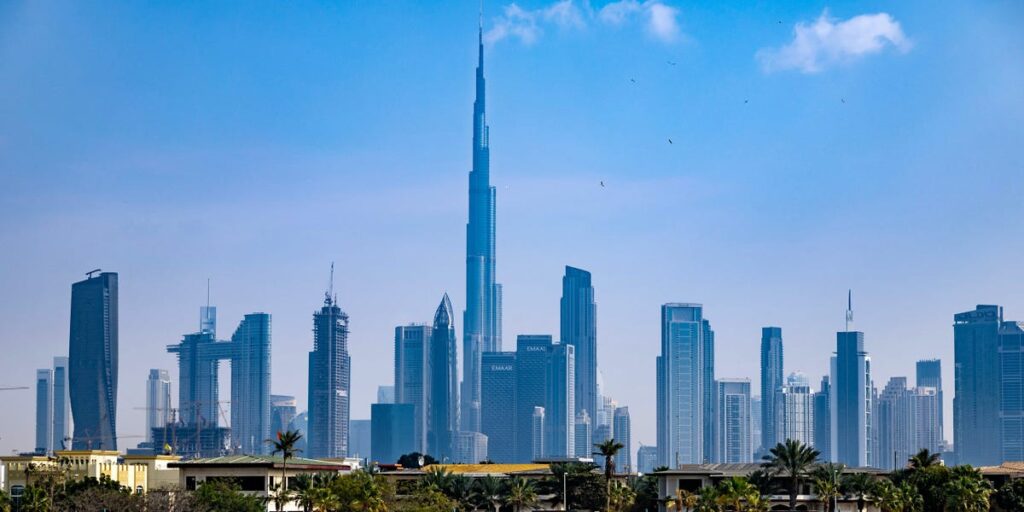The world’s richest people are on the move — and they’re heading for safe havens with tax perks, top-tier schools, and investor-friendly policies.
According to the Henley Private Wealth Migration Report 2025, roughly 142,000 millionaires are expected to relocate globally in 2025.
The provisional net inflow figures are based on data and expert insights gathered between January and May, with final totals expected to be published next year once full-year data becomes available.
The report — produced in partnership with global wealth intelligence firm New World Wealth — reveals the top destination countries attracting high-net-worth individuals and the vast sums of investable wealth they bring with them.
The analysis draws on a blend of data sources, including property and company registries, LinkedIn activity, family office locations, and Henley & Partners’ own client base, to track the global movement of over 150,000 HNWIs.
To estimate the total wealth migrating to each country, analysts multiply the number of incoming millionaires by the average net worth of HNWIs relocating there — a figure that varies significantly between markets.
“2025 marks a pivotal moment,” Dominic Volek, the head of private clients at Henley & Partners, an investment migration consultancy, told Business Insider.
“A record-breaking 142,000 millionaires are projected to relocate internationally, and for the first time in a decade of tracking, a European country — the UK — leads the world in millionaire outflows,” he said.
“It reflects a deepening perception among the wealthy that greater opportunity, freedom, and stability lie elsewhere.”
The top 10 countries gaining the most millionaires in 2025
- UAE
- United States
- Italy
- Switzerland
- Saudi Arabia
- Singapore
- Portugal
- Greece
- Canada
- Australia
The United Arab Emirates tops the list, set to gain a net 9,800 millionaires, followed by the United States with 7,500 and Italy with 3,600.
These countries are among the 10 projected to welcome the highest numbers of HNWIs in 2025 — a trend that could reshape real estate markets, entrepreneurship, and job creation in their economies.
Each of these countries offers a unique mix of tax incentives, lifestyle perks, and residency-by-investment pathways.
“The UAE has evolved from a regional hub to a global wealth nexus through comprehensive policy innovation,” said Volek. Its “zero income tax, world-class infrastructure, political stability, and regulatory framework,” and its 2019 Golden Visa program — refined in 2022 — “have created a compelling proposition.”
The program offers five- and ten-year visa options tied to property and business investments, making it one of the most flexible globally.
In the US, despite economic headwinds and growing political uncertainty, opportunity remains the key draw. “The USA is still attracting record numbers of HNWIs in 2025,” Volek said, “with strong inflows coming from Asia, Latin America, and the UK.”
He described Florida as “especially popular” and Silicon Valley as keeping the world’s top spot for wealthy tech entrepreneurs.
He added that while some older millionaires are leaving for retirement-friendly destinations, inbound interest far outweighs outflows.
Italy, now a rising star in wealth migration, is proving popular with HNWIs from France, the UK, and Switzerland.
“Italy has relatively competitive tax rates when compared to other major countries in Europe,” especially in estate duties — just 4% compared to over 30% in countries like France, Germany, and Spain.
Switzerland, ever-popular with the ultrawealthy, is seeing new inflows from the UK and Scandinavia.
“Zug, Geneva, and Lugano all remain very popular destinations,” Volek noted, “whilst Zurich seems to be losing its appeal.”
Saudi Arabia, meanwhile, is the year’s surprise breakout. The Gulf state is “boosted by strong inflows from the UK, North Africa, and the Middle East,” particularly from Saudi-born HNWIs returning from the UK, Volek said.
Singapore is seeing a smaller-than-usual inflow as wealthy expats increasingly opt for newer financial hubs. “Family office growth has slowed in Singapore over the past year,” Volek said, adding that there is a trend of HNWIs leaving Singapore and moving to the UAE, especially in the financial services sector.
Portugal and Greece continue their ascent, driven by lifestyle appeal, tax perks, and successful investment migration programs. “In Portugal, Lisbon and the Algarve are extremely popular,” said Volek, while “the Athenian Riviera and the Greek Islands are tops in Greece.”
“Southern Europe is fast emerging as a new center of gravity for wealth migration in the region.”
Canada and Australia, while still in the top 10, are showing signs of saturation. These traditional safe havens are recording “the lowest inflows on record,” said Volek.
The UK and China are seeing the biggest millionaire outflows
While some countries are booming, others are bleeding wealth.
The UK is projected to see a net outflow of 16,500 millionaires — the largest of any country — followed by China and India, whose respective outflows stand at 7,800 and 3,500.
“Several European countries are starting to lose large numbers of HNWIs to migration in 2025, led by the UK, France, and Spain,” said Volek.
“Also, Germany, Ireland, Norway, and Sweden are all beginning to see significant wealth outflows in 2025, which is a worrying sign for Europe in general.”
“Millionaires are typically among the first to relocate when conditions deteriorate,” the New World Wealth report states — making migration flows a leading indicator of future economic risks.
Why millionaire migration matters
HNWIs don’t just bring wealth — they often create it. Many are entrepreneurs or investors who inject capital into local markets, buy property, and fund startups.
According to New World Wealth, about 15% of migrating millionaires are founders, with the figure rising to over 60% among centi-millionaires and billionaires.
“If one reviews the world’s fastest-growing wealth markets over the past decade, it is noticeable that most of these countries have investment migration pathways and have been heavily aided by inward wealth migration,” Volek said.
But long-term success goes beyond visas, according to Volek; it’s the combination of favorable tax policy, political stability, strong institutions, and quality of life that helps nations truly attract and retain global wealth.
And what Volek called the “great wealth migration” is set to “accelerate,” he said.
“Its trajectory will be shaped by how effectively nations address the complex mix of economic, political, and lifestyle factors that drive these decisions, with investment migration serving as one element in broader competitive strategies for attracting and retaining global wealth.”
Read the full article here
















